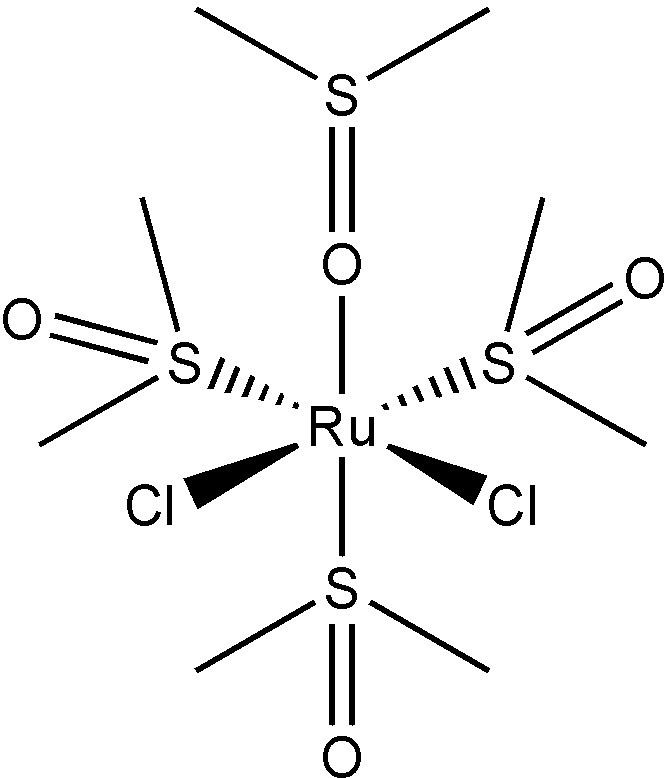Formula C8H24Cl2O4RuS4 | Molar mass 484.51 g/mol | |
 | ||
Appearance Various shades of yellow crystals | ||
Dichlorotetrakis(dimethyl sulfoxide) ruthenium(II) describes coordination compounds with the formula RuCl2(dmso)4, where DMSO is dimethylsulfoxide. These complexes illustrate linkage isomerism for the ligand DMSO. In these complexes, two chloride anions and four molecules of dmso are coordinated to a central ruthenium (II) core.
Contents
Structure
RuCl2(dmso)4 has been isolated as two isomers, but each is an octahedral coordination compound. The ruthenium adopts a +2 oxidation state, and the compounds follows the 18 electron rule.
The two isomers are cis, fac-RuCl2(dmso-S)3(dmso-O) and trans, mer-RuCl2(dmso-S)4. The trans, mer configuration is kinetically favored, but thermodynamically unstable with respect to the cis isomer. Cis and trans refer to the relative positions of the chloride ligands. The fac/mer describes the binding of the dmso ligands. The notation dmso-S/O refers to the atom through which the dmso molecule is coordinated to the ruthenium center. Thus, dmso-S means that the dmso ligand coordinates through the sulfur atom, whereas dmso-O coordinates through the oxygen atom.
Synthesis
The complexes were first prepared by heating DMSO solutions of ruthenium trichloride under hydrogen atmosphere. An alternative procedure has been developed which avoids hydrogen gas.
Applications
RuCl2(dmso)4 was idenfified as a potential anticancer agent as far back as the early 1980s. Continued research has led to the development of several related dmso-containing ruthenium compounds, some of which have undergone early-stage clinical trials.
